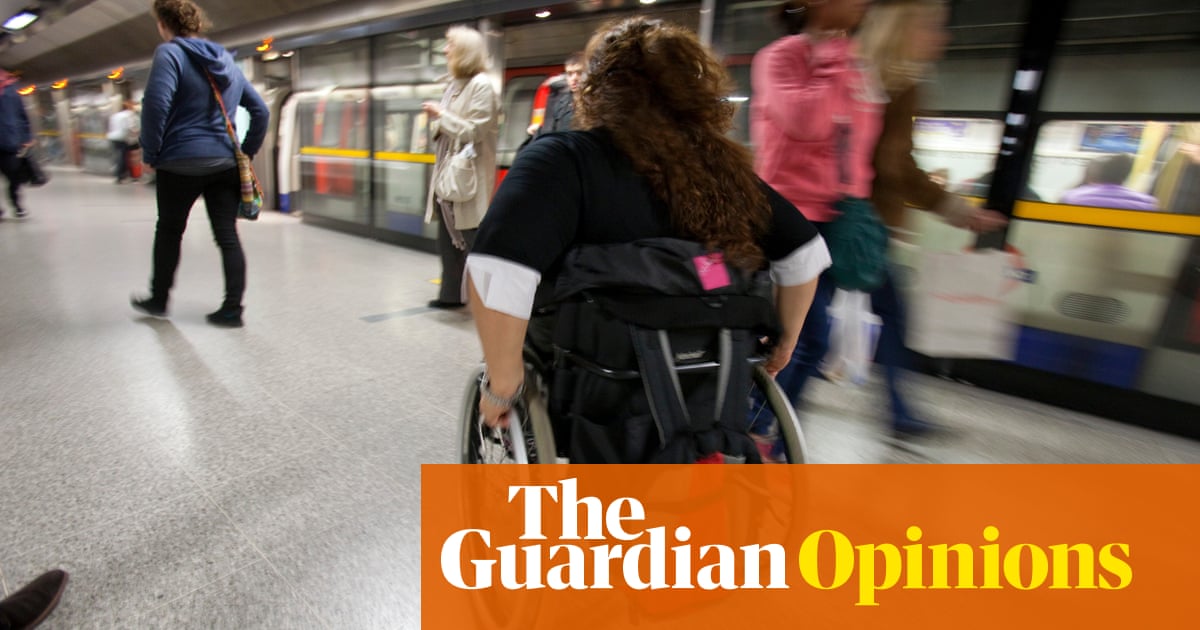
As global populations age, the question of how our cities are designed and built to accommodate all abilities is a pertinent one. Last week, transport officials proposed an array of measures to make British towns and cities more accessible to a modern population. Allowing people extra time to cross the road at traffic lights, and improved visibility of street signs, were some of the ideas put forward by Active Travel England (ATE) – a welcome first step in the right direction.
By 2050, the UN has predicted that two-thirds of the global population will live in cities. But we know they are not designed for everybody. Indeed, in my experience, many of the features of our urban planning are actively exclusionary – even ableist.
In London, only one-third of London Underground stations are wheelchair friendly. And as ticket station closures loom, disabled and elderly people who rely on assistance to be able to safely access public transportation, will be further discriminated against. It is no wonder that so many disabled people find the urban environment perilous, frightening and plain exhausting to navigate.
As someone who is young and able-bodied, I was unaware of how exclusionary our public spaces were, until recently, when I became a wheelchair user for several months due to a period of illness.
Suddenly, the pavements I had walked down previously, giving no second thought to their twists, turns and general degradation, became treacherous. Each cracked paving slab sent a painful jolt through my already vulnerable body, and some streets became simply unusable.
The space that I was able to publicly occupy shrank, leading me to become more and more hesitant of venturing outside. The illness made me feel othered – but the feeling of being prevented from accessing and enjoying my area like anyone else made it much worse.
My body eventually recovered and the wheelchair was later retired, but the memories and experiences have stayed with me, along with a deep sense of injustice. But shortly after my own recovery, one of my parents was diagnosed with multiple sclerosis, a degenerative illness that can affect mobility.
What we once could do as a family, with no second thought, now had to be carefully considered. Certain shops and facilities were avoided due to difficulty in accessing them, trips to the cinema had to be cancelled as there was no accessible parking near enough to the venue, and more attention was paid to navigating pavements. I realised that the same feelings of exclusion that I had experienced as a temporary wheelchair user were being felt by my parent, but for them, this would be permanent.
In 2021, 10.4 million people were recorded as disabled across England and Wales and there are some signs that town planners are waking up to this. New engineering projects, such as the HS2 rail line, being built with step-free access, is one such example. In London, the legacy of the 2012 Paralympics is still being felt, with the games spurring planners to recreate inclusive designs in the urban environment: £4m was spent on making nearly 4km of the South Bank more accessible, for example, with more ramps and a smoother surface on paths.
But crooked pavements and illegible street signs are not the only problems affecting disabled pedestrians. With the introduction of low-traffic neighbourhoods and pedestrianised areas, largely in response to over-congested streets and poor air quality, access to certain parts of our cities has become restricted. Schemes like the blue badge give priority parking to those with disabilities, but there must be parking spaces, and extremely close by, in order for access to remain as equal as possible. Thought must be given to making car-free zones accessible to those who need cars to travel to them in the first place.
The social model of disability identifies the way in which barriers in our society disable the individual, rather than their specific impairment or difference. A less abled body may only be viewed as such if the environment makes it so. Disability should not be a barrier to living a full and accessible life; town planners would do well to remember this.
Dorothy Dunn is a freelance journalist












